Bernard Piffaretti: Seeing Double
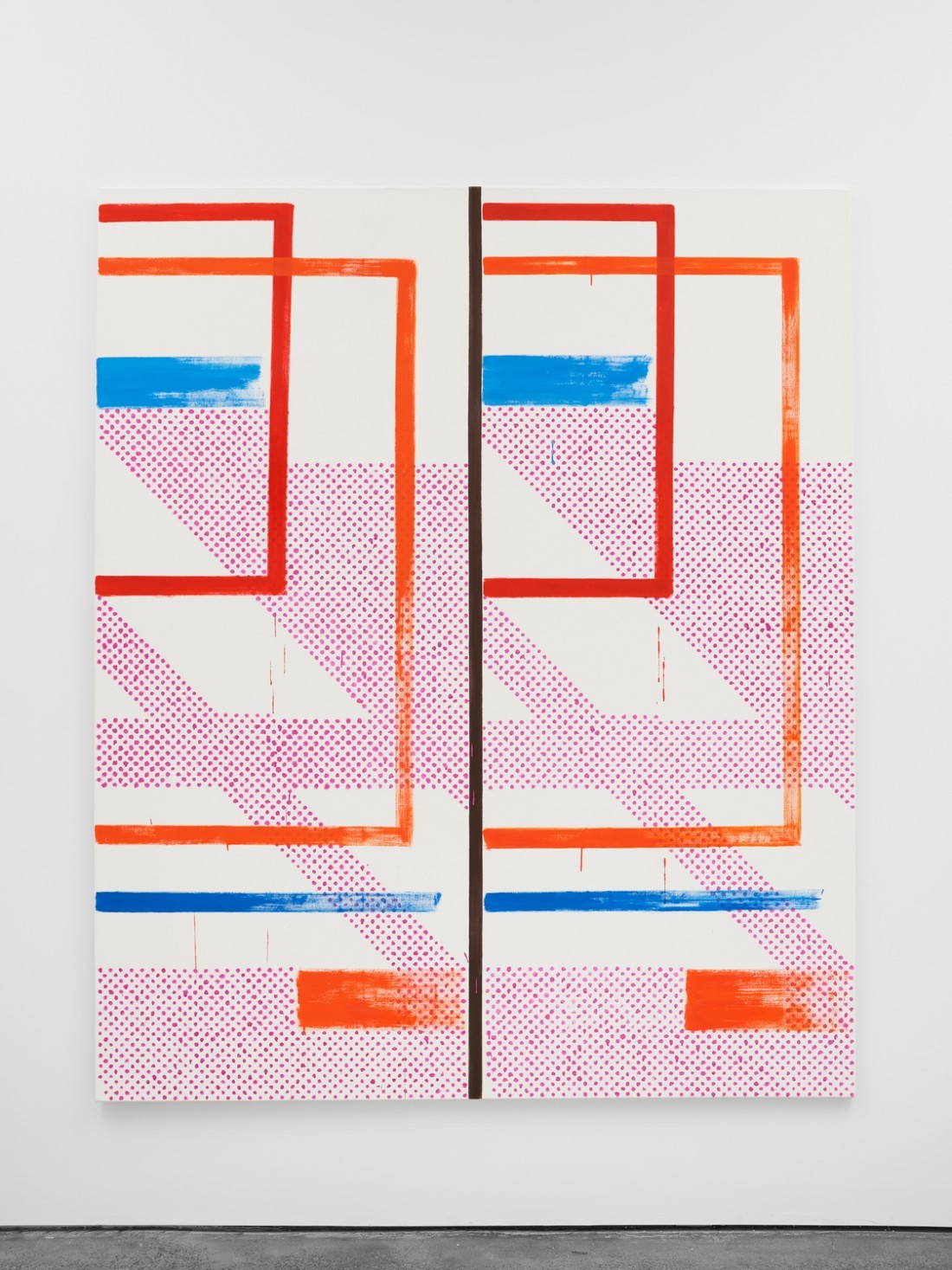
Bernard Piffaretti, Untitled, 2021, acrylic on canvas, 240 x 200 centimetres. All images © Bernard Piffaretti. All images courtesy Lisson Gallery, New York.

Untitled (detail), 2021, acrylic on canvas, 240 x 200 centimetres.
Now in his late 60s, Bernard Piffaretti has long been recognized as one of the leading painters in France. But “Pick Up,” his 2022 show at the Lisson Gallery in New York, was just his third solo outing in that city. In Canada, his work is even less familiar: His work was only shown once, at the very outset of his career, in a group show at the Musée des beaux-arts in Montreal in 1982. So it was a good thing that the Lisson show, though mostly of works made in 2021, also included older works dating back through 1995.
I feel safe in saying that no viewer would have been able to pick out which were the newer works in the show and which the less recent. Across the quarter of a century of effort represented by “Pick Up,” there is no sense of development—much variety, yes, as well as near-absolute consistency in both method and quality, but no development.
Let’s talk first about the variety. Piffaretti is one of those artists who—like Thomas Nozkowski or David Diao, for instance—avoids a recurring signature image, and (aside from the fact that his work is nonrepresentational) he is uninterested in stylistic consistency. The forms can be geometrical or gestural, orderly or casual; moreover, pattern and gesture can be mixed. And there are paintings employing a single colour on a white ground, but others are chromatically explosive. Occasionally, there are echoes of modern art history—in “Pick Up,” for instance, one painting from 2020 (Untitled, like all Piffaretti’s works) includes a concentric circle motif that brings to mind Kenneth Noland as well as Jasper Johns’s targets, while another, from 2005, puts vertical stripes inside a triangle in a way that reminds me of certain Barnett Newman paintings from around 1969, for instance Chartres (Daros Collection, Switzerland) or Jericho (Centre Pompidou, Paris)— but such reminiscences are the exception, not the rule. Piffaretti is anything but backward-looking, and would probably agree with Newman’s assertion, “The painting is a real and concrete revelation that can be understood by anyone who looks at it without the nostalgic glasses of History.” Each of his paintings seems to start from a fresh idea about what to paint and how to paint it.
Piffaretti likes to say that he paints painting. I think I know what he means when he says this— that painting “represents” nothing but itself—but there’s something in it that puzzles me, too. When someone paints a portrait—let’s say, when Picasso paints Gertrude Stein—I imagine that by looking at the portrait, I know something about what Stein looked like. When someone paints a landscape—even Cézanne painting Mont Sainte-Victoire—I likewise feel that I know something about what the place looked like. But when Piffaretti paints painting, I no longer know what painting looks like. After all, in every painting he paints painting, and in each one painting looks different. And this sudden realization or recollection that I don’t know what painting is becomes part of the complex pleasure that I take in looking at his paintings. It’s the pleasure of having the rug pulled out from under your feet.
So there’s not a typical way for a Piffaretti to look, yet once you know his work, you can spot one of his paintings immediately. There is a typical way for a Piffaretti painting not to look but to be, and that comes down to the strict method he has followed since 1986—what he calls his “duplication method.” Every painting begins in the same way: with a vertical line painted through the centre of the canvas. He then paints one side of the canvas, and, having done so, usually paints the other side in as similar a way as possible, trying to reproduce (but of course, since this is painting done in the traditional way, by hand, imperfectly) every mark and drip. In some rare cases, however, he elects to leave the other side blank. Of the 18 paintings in “Pick Up,” just one, from 2021, had a blank left side.
So Piffaretti seems to impose a choice on the viewer: focus on the differences among the paintings, or on the system that unites them, the method. Most rewarding would be to alternate, of course—consider first the langue, then the parole. Here, I’m going to think about the method, about what’s constant in Piffaretti’s art.
It appears that each of these paintings begins with an originary gesture, one that is always the same and always different. The artist draws a distinction, namely the distinction between left and right, which is also (considering the Western disposition to read from left to right) therefore a distinction between before and after, active and reactive, call and response, and so on. Like Newman with his famous “zips,” Piffaretti uses line to open painting by dividing it in two; through this division, the painting is also dialectically unified. What happens when the originary division allows painting to be painted? In principle, anything is possible. Bare marks. Lines. Shapes, open or closed. Fields of colour, simple or variegated. Patterns. Grids. Loops. Meanders. Blurs. Mostly—but as usual, there are some exceptions— whatever stops short of constituting a picture but lets the things that painting is made of remain visible as such, which amount to everything that is conventionally called “abstraction.”
But when we encounter these redoubled occurrences, painting painting itself, we are bound to ask: Is one a copy of the other? If so, which is the copy and which the original? Does it matter? It’s hard to say. As Piffaretti himself says, “The hesitation over which is the ‘model’ (on the right or left) keeps you guessing” and paradoxically ensures the “incompleteness” of the painting. But what’s certain is that one can’t help comparing the painting’s left and right sides, looking for small differences that might or might not be significant but that in any case affirm that this is all the work of the hand and therefore not quite precisely replicable, but nonetheless the work of a human hand, of a singular individual (not different members of a workshop, as might so often be the case historically and still today), and therefore deeply imbued with similar traits.
Besides, what if our impulse to perceive in two nearly identical passages of painting an original and a copy were mistaken? It could well be that on a macro scale, there is no original. I always think of that beautiful passage from Henri Matisse’s “Notes of a Painter” in which he evokes the epistemic difficulties generated by his painterly activity: “If I put a black dot on a sheet of white paper,” he writes, the result is “a clear notation.” It is something like the famous Cartesian “clear and distinct idea,” an indubitable affirmation. But then: “Beside this dot I place another one, and then a third, and already there is confusion.” Something happens as these black marks multiply, perhaps not immediately with the second one but certainly by the time there appears a third. There is no longer any indubitable affirmation. Each mark puts the others in doubt. And all the more so when colour becomes a factor: “If upon a white canvas I set down some sensations of blue, of green, of red,” explains Matisse, “each new stroke diminishes the importance of the preceding ones,” and so he must continually revise and, as he says, “transpose” these sensations in order to maintain their correct relationship.

Untitled, 2021, acrylic on canvas, 200 x 240 centimetres.
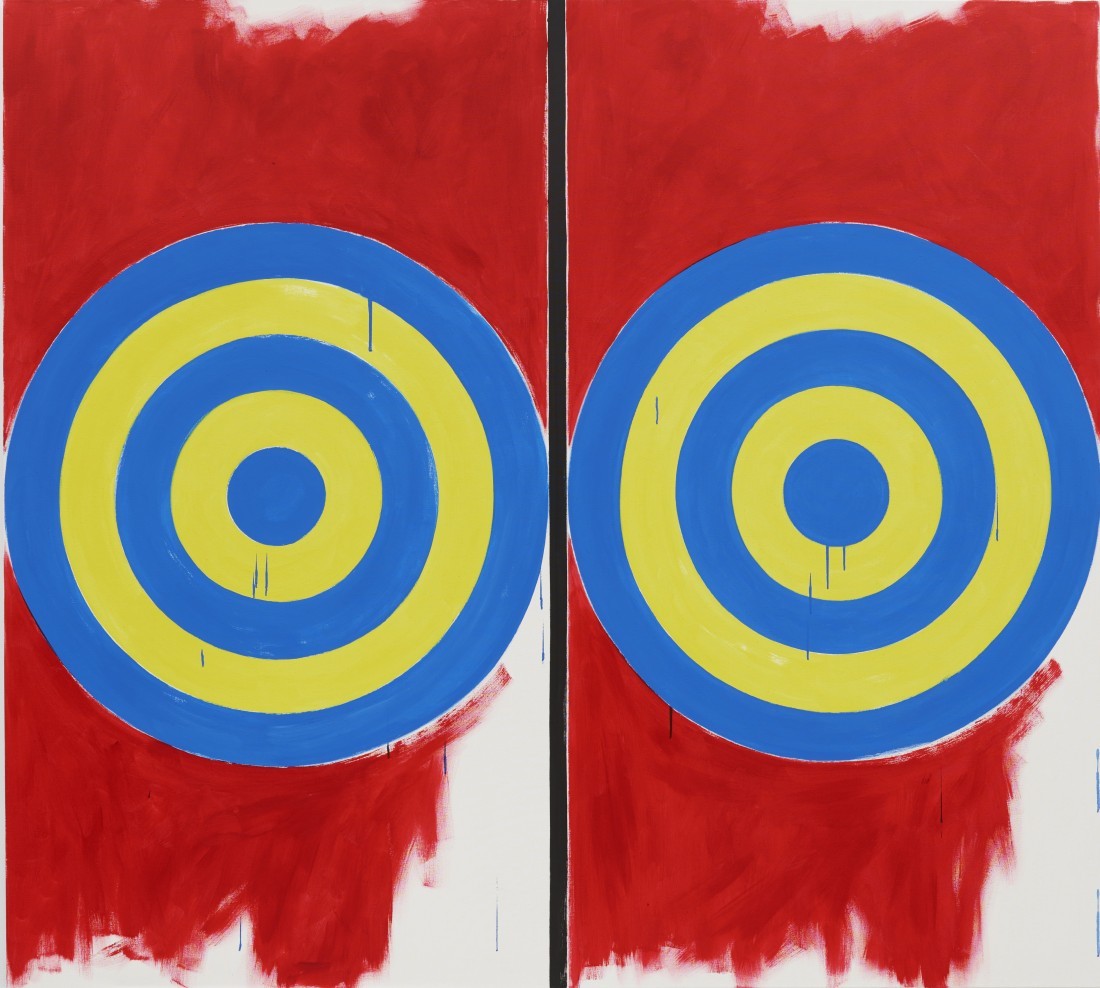
Untitled, 2020, acrylic on canvas, 180 x 200 centimetres.
Why do I remind myself of this fundamental point here, in relation to Piffaretti’s art and my doubt about whether it involves something that should be called “copying”? Because it helps me to understand something about how, when I look at one of his paintings—although I understand that as a rule he paints each side separately, though he has no consistent policy as to whether the right or the left side is to be painted first—from my position as a beholder I can just as easily imagine that, rather than painting the area to the left of the central line first and then going on to paint the right side, he painted the two sides in tandem, alternating, for this better corresponds with how I receive the painting. I can feel that, in Matisse’s terms, he might have put down a sensation of blue on the left. Then, repeating as closely as he could that same sensation on the right, he added a green mark to the right, observing its effect, and only then added a similar one to the left side on which he had started. Then a red mark might have been added to the two on the left, and then again on the right, where then a black one might be called for—this subsequently to be repeated on the left. Weaving back and forth in this way, the painter would thereby have produced a painting with the same abstract forms occurring almost indistinguishably on the right and on the left, yet without ever having copied any but the individual marks, and that as much on one side as the other. At the micro level there would still have been originals and copies—but not at the macro level.
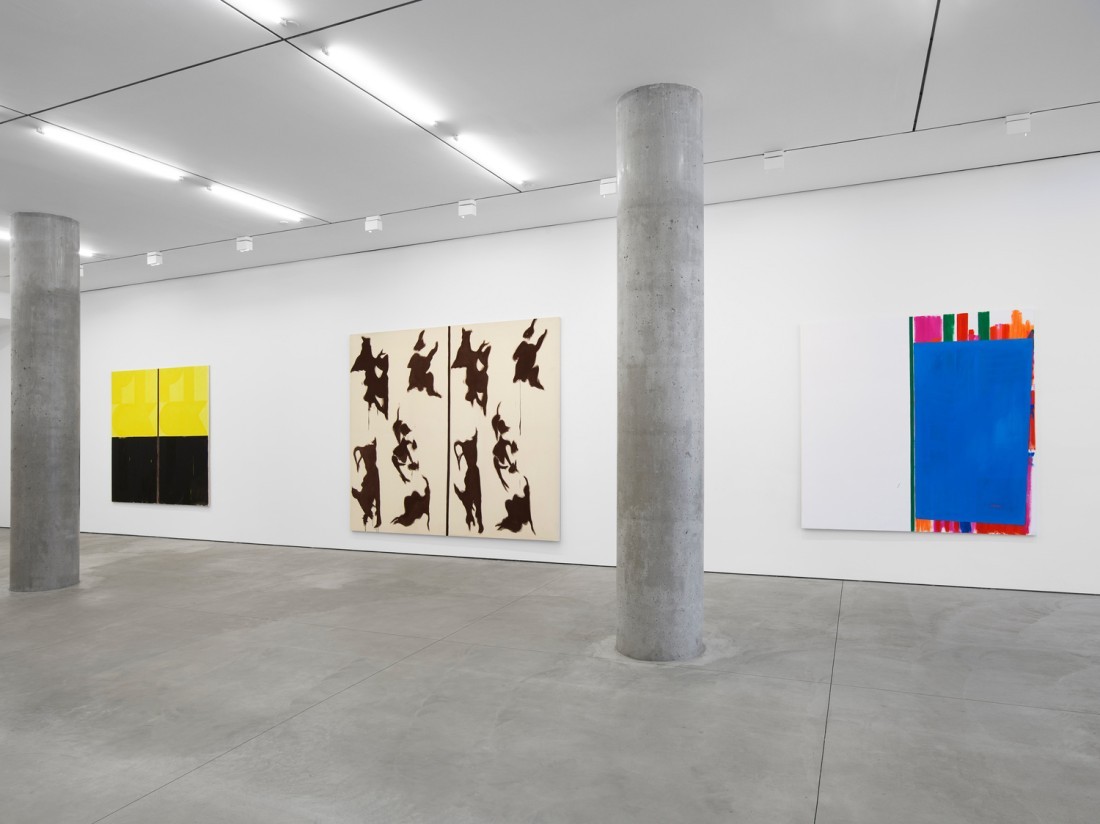
Installation view, “Pick Up,” 2022, Lisson Gallery, New York.
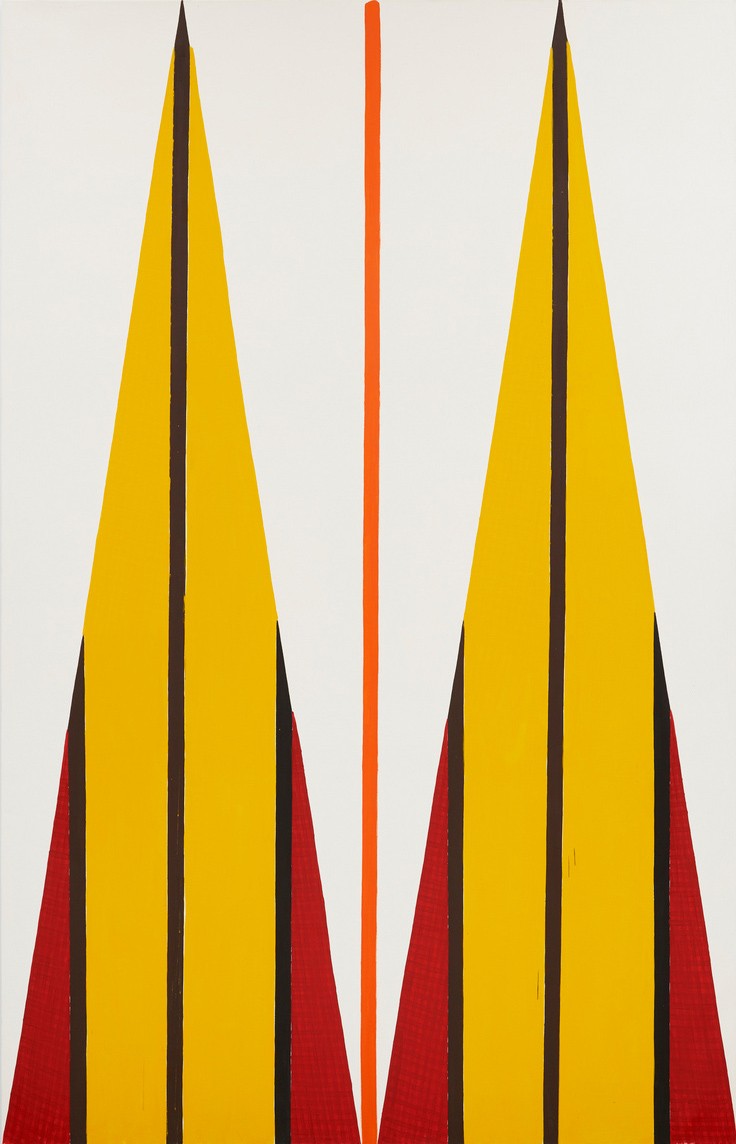
Untitled, 2005, acrylic on canvas, 300 x 193 centimetres.
This way of working would have been in accord with my work of looking, which does not generally concentrate on one side at a time but shuttles back and forth between them. It is simply a counterfactual reconstruction, on the part of a viewer, of how the painting might have come to appear as it does. What I like about this way of seeing Piffaretti’s paintings is, first of all, that it throws our sense that there is an original and a copy into utter confusion—but without entirely doing away with this distinction, which it displaces to another level. More significant to me perhaps is the added importance it lends to the painting’s central dividing line, which I must now conceive of not as a sort of Rubicon or Maginot Line that holds fast for a long time and is then crossed once and for all but rather as something like the net on a tennis court. Painterly gestures are lobbed back and forth energetically and repeatedly across it. As a viewer, it would make no more sense to focus my attention with exclusive concentration on one side of the canvas at a time than it would make for me as a tennis fan to fix my gaze on just one side of the net and put off until later observing what occurs on the other. (Think of the famous shot in Alfred Hitchcock’s Strangers on a Train: at a tennis match at Forest Hills, we see the crowd eagerly moving their heads back and forth to follow the volley—with one exception: the deranged killer Bruno fixes his attention solely on one side of the court, where the protagonist Guy is at play. Only the madman stares at just one side of the game.) As Piffaretti himself has observed, the “linearity of time seems … to be perturbed when you stand in front of my paintings.” This perturbation is embodied in the sense of back-and-forth I am trying to evoke.
Piffaretti asserts painting by reiterating it, by joining painting to itself. The painting is verified (as in scientific research) by repeating it. Piffaretti’s art does not conceal art. It does not show the mutation that results from painting asserting itself; it shows the assertion itself, as such. The painter verifies his mark by echoing it. Painting reveals painting but thereby produces an inevitable confusion between the painting that reveals and the painting that is revealed.
With Matisse, at least until his very last phase, there was always recourse to a model but in a paradoxical manner: one had to have the model without being, as he said, “servile” to it. Nature, the model, the motif, might be necessary to the process of painting, yet would not underwrite its truth. With Piffaretti, painting becomes its own model—but thereby reveals that at the same time it is without a model, without any check on its irresponsibility to any origin, since it is impossible to determine at which point painting serves as its own model and at which point it would represent the faithful yet imperfect reproduction of its model. Moreover, seeing how close the resemblance is between painting and painting, between right and left, between what might be the copy and what might be the original, one might wonder about whether, to the extent that copying is at issue here, it can be branded as “servile”—with all the disrepute associated with that word. Is Piffaretti—who has always ruled out the use of any form of technical reproduction in the making of his work (from silkscreening à la Warhol, Rauschenberg, et al., to the digital inkjet printing used more recently by Wade Guyton, Kelley Walker and others)—nonetheless putting himself in the position of a servile operative, a quasi-mechanical copyist?
My judgment would be, rather, that in Piffaretti’s case, what Matisse called “the spirit of the picture” must be something that cannot be directly communicable by either instance of this reproducible or citable manifold of colours and facture or even by their co-presence; if there is anything that emblematizes the spirit of the painting, it would be the vertical dividing line. That line is the moment of the unique, the non-duplicated, within the painting, which opens up the space for everything else. It therefore has what might be called a ritualistic function, which is why it is, in essence, repeated from painting to painting despite always being different (in hue, for instance) from painting to painting. It is the one that makes possible the two, though in the equal co-presence of the two, it is the third entity whose salience one might have neglected to take into account.
Imagine two consecutive frames extracted from a film. They are almost identical. But the first is not the original of which the second is a copy. The two frames each separately refer to the same model, the same profilmic situation, and the possibly indiscernible but ontologically irreducible difference between them can be said to arise from the pure activity of the process of time. The act of filming has extracted these moments from that flux and also separated them from each other. There is a gap between the two frames that, in a way, embodies the time that has been leached from the images themselves. And it is across this gap that the famous “persistence of vision” operates in such a way that the mind produces a movement that is absent from the celluloid itself. However, no film can be just two frames long because no projector is small enough to run it, so our two extracted frames can no longer or not yet constitute a moving image. Nor are they any longer exactly still photographs, for the idea of time, change and movement is embodied in the line that separates them.
It might sound strange if I suggest that you think of one of Piffaretti’s paintings as such a film, or non-film. For after all, the scene recorded on film has in some way existed, has been placed before the eye of the camera in order to create a mise-en-scène. As we know, Piffaretti’s painting proceeds without a model of this type. And yet after all, the painting does record something. It records an activity that took place not (so to speak) on the other side of the canvas but on this side—the side where the painter once stood and where now any viewer may stand. More to the point, the two “frames” presented by the painting, like the two frames extracted from a piece of film, cannot in themselves convey a movement that occurs in the mind of the beholder.
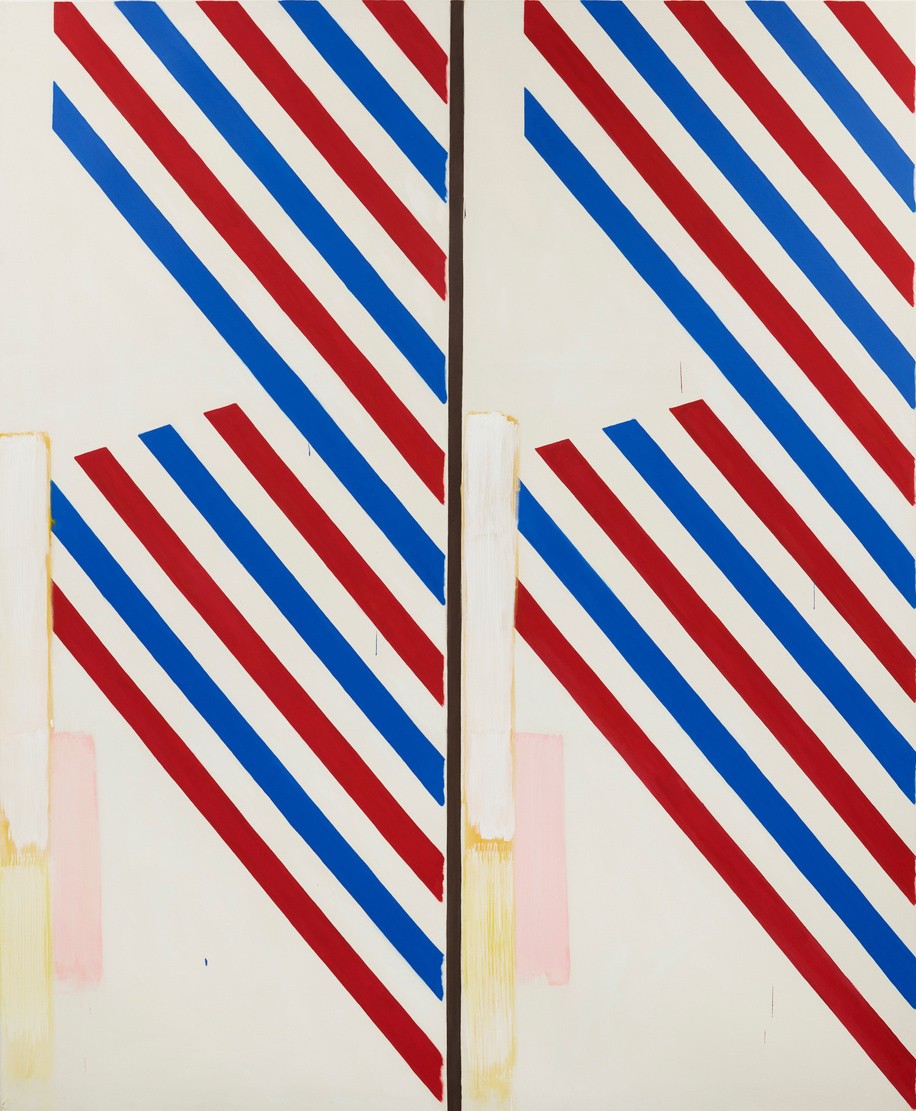
Untitled, 2005, acrylic on canvas, 300 x 250 centimetres.
The movement that contemplation of the painting produces is the movement of thinking—the thinking that is the necessary accompaniment to looking or rather its double (its semblable, as Baudelaire would say). The distinguishing mark that opens up the space of painting, materially visible as the vertical band demarcating the painting’s central axis, is where seeing the space of painting is painted—where what is painted is not only the object seen but the subject seeing it. It is where painting means not yet knowing what painting is. ❚
Barry Schwabsky’s recent publications include a monograph, Gillian Carnegie (London: Lund Humphries, 2020), and the catalogue for the retrospective exhibition “Jeff Wall” at Glenstone Museum, 2021. His new collections of poetry are Feelings of And (New York: Black Square Editions, 2022) and Water from Another Source (New York: Spuyten Duyvil, 2023).

